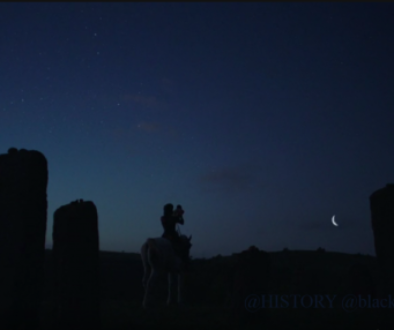Jazz at the Abbey: Downton Series 4, Episode 5 Review
(This article was originally featured on Smitten By Britain on Feb. 4, 2014)
Although quite a bit happened in this episode, this review is going to focus on Rose’s attempts to push the occupants of Downton into the Jazz Age. Ever since I started watching Downton, I have been anticipating how the writers would address the age of the flapper. Although 1922 is a bit early for many of the musical and fashion developments that would come to characterize the Twenties, Jack Ross is a good composite representation of the early part of the era.
Rose clearly had feelings for Jack ever since episode three and would go to any lengths to see him again. Inviting him to perform for Robert’s birthday as a surprise solved two problems at once. Everyone played along with the idea and no one even thought to hint at what Rose had in store.
The arrival of Jack and his band was a true test of the existing social attitudes at Downton. Although they could have entered through the front door, Rose had to keep their appearance a mystery, hence the extended stay in the servants’ hall. (This would have been in stark contrast to American nightclubs in 1922 when even A-list black musicians like Bessie Smith had to enter venues from the back door due to segregation. )
Based on their reactions, one might believe that Carson and a few others downstairs had never seen a black person before. This is not surprising considering the Abbey is far from London or any other center of urban population. Although some of the interactions were awkward, Carson credited Jack with being a respectable man.
Gasps and looks of surprise also accompanied Rose’s introduction of the band upstairs; some wondered if it was socially appropriate for Jack to be there. Surprisingly, Robert, who usually doesn’t take well to pushes for modernization, took Cora’s and began hand to dance.
Naturally, Violet was not amused by the competing rhythms and melodies but as the guests grew used to the sounds, the overall reaction to jazz at the Abbey was positive. Jack was seen as just a sign of the times and society moving forward. These Yorkshire elites wanted to be as in touch with developments as their London counterparts.
At the end of the episode, Rose’s true intention for her surprise was revealed. While everyone is sleeping or out of sight, she and Jack sneaked a kiss in the servants’ hall.
Mary, who was looking for Jack in order to negotiate payment for his performance, discovered the couple by accident. The episode ended with a very awkward conversation between Mary and Jack.
Although I would love to see the relationship between Rose and Jack become serious, the chances are extremely slim. She is clearly more in love with the idea of social upheaval than Jack as a person. Jack cares for Rose, but knows in the back of his mind that there is too much in the way.
In theory, a marriage between Jack and Rose would be legal in England but still not socially acceptable. Unlike the U.S., interracial marriages were never banned and many immigrant men of color married British women before, during, and after this period. However, an elite woman would certainly face disownment and disinheritance for pursuing an interracial relationship.
Although Sybil had broken away from expectations to marry Branson, only the barrier of class existed. No amount of money Jack could make that time would erase racism. The most likely end to this story is that Mary or someone else in the family will find out Rose has gone too far and put an end to the affair.
The story of Jack to me is only the beginning of Downton’s clash with the Jazz Age. In future episodes, we can expect Rose to make another attempt at becoming the flapper she has always wanted to be.
Note: For those who really want to go down the road of interracial romance in the Jazz Age, I highly recommend Jillian Larkin’s YA seriesThe Flappers. Although it is set in America, two of the main characters are a much more fleshed out version of Jack and Rose.


